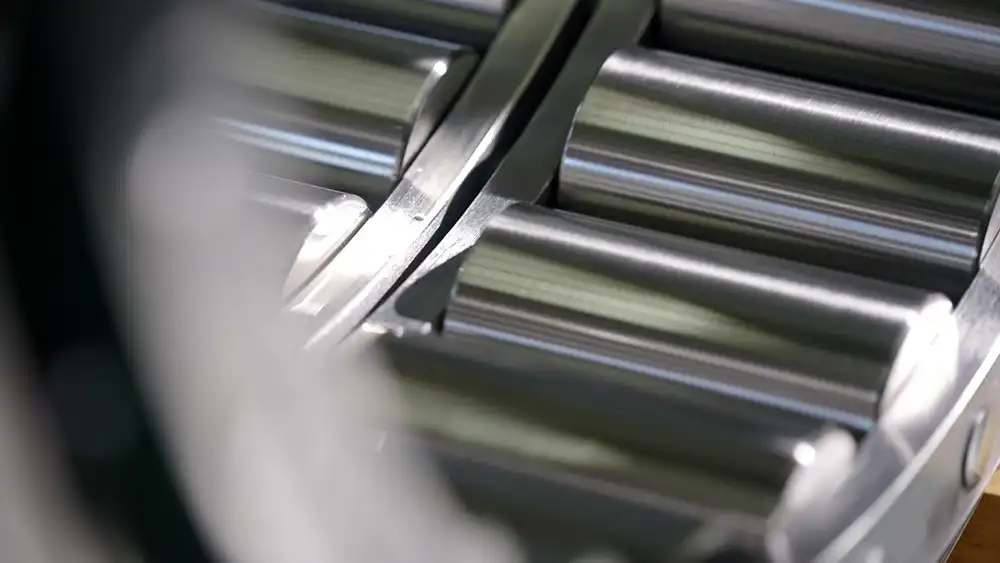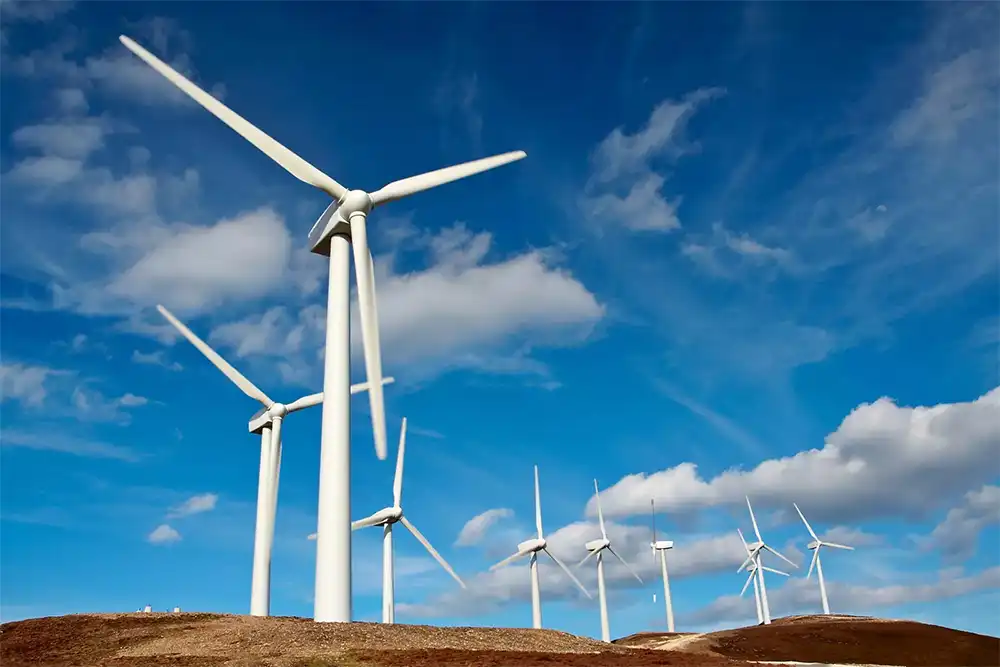Cylindrical Rollers: The Key to Improving Durability and Reducing Downtime in Your Machines
In today's demanding industrial landscape, the reliability and performance of machinery components have become increasingly crucial for maintaining operational efficiency. Cylindrical rollers, though often overlooked, play a fundamental role in ensuring smooth operations across various industrial applications. These precision-engineered components serve as the backbone of many mechanical systems, particularly in high-stress environments where reliability is paramount. The integration of advanced manufacturing techniques and materials science has revolutionized the development of cylindrical rollers, making them essential elements in modern industrial machinery.

Luoyang Huigong Bearing Technology Co., Ltd. brings unmatched expertise to the cylindrical roller manufacturing industry. With an experienced R&D team providing technical guidance, customized solutions for various operating conditions, and 30 years of industry experience collaborating with major enterprises, we stand at the forefront of innovation. Our state-of-the-art production equipment and testing instruments, combined with over 50 patents and certifications including ISO9001 quality management system and ISO14001 environmental management system, demonstrate our commitment to excellence. As a 2024 quality benchmark enterprise, we invite you to explore our solutions by contacting us at sale@chg-bearing.com or calling +86-0379-65793878.
Why Are Cylindrical Rollers Critical for Machine Performance?
The critical role of cylindrical rollers in machine performance encompasses multiple aspects of mechanical engineering and operational efficiency. These precision components, manufactured to exacting standards with sizes ranging from φ20 to φ120mm, achieve national standard level 1 accuracy with convex value deviations controlled within ±0.001mm. This exceptional level of precision engineering directly contributes to the overall system performance through several key mechanisms. The optimized geometry of cylindrical rollers enables superior load distribution across the bearing surface, significantly reducing stress concentrations that could otherwise lead to premature wear or failure. This enhanced load distribution capability is particularly crucial in high-speed applications where even minor imbalances can result in accelerated wear patterns and increased maintenance requirements.
The sophisticated design of modern cylindrical rollers incorporates advanced tribological principles that minimize friction and heat generation during operation. This reduction in operational friction not only contributes to improved energy efficiency but also plays a crucial role in extending component lifespan. The hardness range of 60 to 64 HRC, achieved through carefully controlled heat treatment processes, provides an optimal balance between surface durability and structural integrity. This hardness specification ensures that the rollers maintain their dimensional stability under load while resisting wear and deformation. The combination of precise manufacturing tolerances and optimal material properties results in bearing assemblies that exhibit superior performance characteristics across a wide range of operating conditions.
Furthermore, the impact of cylindrical roller quality on machine reliability extends beyond immediate performance metrics. Through advanced surface finishing techniques and sophisticated material selection, modern cylindrical rollers contribute to reduced vibration levels in operating machinery. This reduction in vibration not only improves the precision of mechanical operations but also contributes to extended equipment life and reduced maintenance requirements. The integration of these high-precision components into mechanical systems results in measurable improvements in overall system efficiency, with many facilities reporting significant reductions in energy consumption and operational costs.

How Do Different Roller Grades Impact Industrial Applications?
The classification and implementation of roller grades (G1, G1A, G2, G2A) represents a sophisticated approach to meeting diverse industrial requirements while optimizing performance and cost-effectiveness. Each grade designation corresponds to specific manufacturing tolerances, surface finish requirements, and performance characteristics that make them suitable for particular applications. The G1 grade represents the pinnacle of precision manufacturing, incorporating the most stringent tolerance requirements and superior surface finish specifications. These ultra-precise components are particularly vital in high-speed applications where minimal vibration and maximum accuracy are essential. The manufacturing process for G1 grade rollers involves multiple stages of precision grinding and superfinishing operations, resulting in components that exhibit exceptional geometric accuracy and surface quality.
The G1A grade builds upon the foundation of G1 precision while incorporating specific modifications to enhance load-carrying capacity and thermal stability. This grade is particularly well-suited for applications that demand premium performance under challenging operating conditions. The enhanced load-carrying capacity is achieved through optimized internal geometry and superior surface finish characteristics, while improved thermal stability ensures consistent performance across a wide temperature range. The manufacturing process for G1A grade rollers includes additional steps to verify and maintain these enhanced performance characteristics, resulting in components that offer exceptional reliability in demanding industrial applications.
The G2 and G2A grades represent a practical balance between performance requirements and economic considerations. The G2 grade provides excellent reliability and performance characteristics suitable for standard industrial applications, while maintaining cost-effectiveness through optimized manufacturing processes. These components undergo rigorous quality control procedures to ensure consistent performance and reliability, though the tolerance specifications are slightly less stringent than those of G1 and G1A grades. The G2A grade incorporates specific modifications to address particular application requirements, such as enhanced surface treatments or modified geometry, while maintaining the economic advantages of the G2 manufacturing process. This grade classification system enables engineers and maintenance professionals to select the most appropriate components for their specific applications, optimizing both performance and cost-effectiveness.
What Makes Wind Turbine Applications Unique for Cylindrical Rollers?

The application of cylindrical rollers in wind turbine systems presents a unique set of challenges and requirements that demand specialized engineering solutions and manufacturing processes. Wind turbines operate in some of the most demanding environments imaginable, subjected to constant variations in load, speed, and environmental conditions. The cylindrical rollers used in these applications must withstand extreme temperature fluctuations, exposure to moisture and contaminants, and varying operational loads while maintaining reliable performance over extended periods. The engineering challenges associated with wind turbine applications have driven significant innovations in cylindrical roller design and manufacturing, resulting in components that exhibit exceptional durability and reliability under adverse conditions.
The development of specialized surface treatments and coating technologies has been crucial in addressing the unique requirements of wind turbine applications. Advanced corrosion-resistant coatings protect the rollers from environmental exposure, while specialized surface treatments enhance wear resistance and reduce friction under varying load conditions. The internal geometry of wind turbine cylindrical rollers is optimized through sophisticated computer modeling and analysis, ensuring optimal load distribution even under the complex loading patterns characteristic of wind turbine operation. These design optimizations extend to the cage and raceway configurations, which are engineered to maintain proper lubrication distribution and thermal stability under all operating conditions.
The manufacturing process for wind turbine cylindrical rollers incorporates multiple layers of quality control and verification to ensure consistent performance and reliability. Each component undergoes extensive testing and inspection procedures, including dimensional verification, surface finish analysis, and material property confirmation. The integration of advanced manufacturing technologies, including precision grinding and superfinishing operations, ensures that each roller meets the exacting specifications required for wind turbine applications. The combination of specialized design features, advanced materials, and precise manufacturing processes results in cylindrical rollers that provide exceptional service life and reliability in wind turbine applications, contributing to reduced maintenance requirements and improved operational efficiency.
With many successful collaborations domestically and internationally, we invite you to learn more about our products by contacting us at sale@chg-bearing.com or calling our hotline at +86-0379-65793878.
References:
1. Harris, T. A., & Kotzalas, M. N. (2023). Advanced Concepts of Bearing Technology. CRC Press.
2. ISO 492:2014 Rolling bearings — Radial bearings — Geometrical product specifications (GPS) and tolerance values
3. Zaretsky, E. V. (2022). Rolling Bearing Life Prediction, Theory, and Application. NASA Technical Report.
4. Wind Turbine Design Standards IEC 61400-1:2019
5. SKF General Catalogue (2023). Rolling Bearings Technical Reference Guide.

